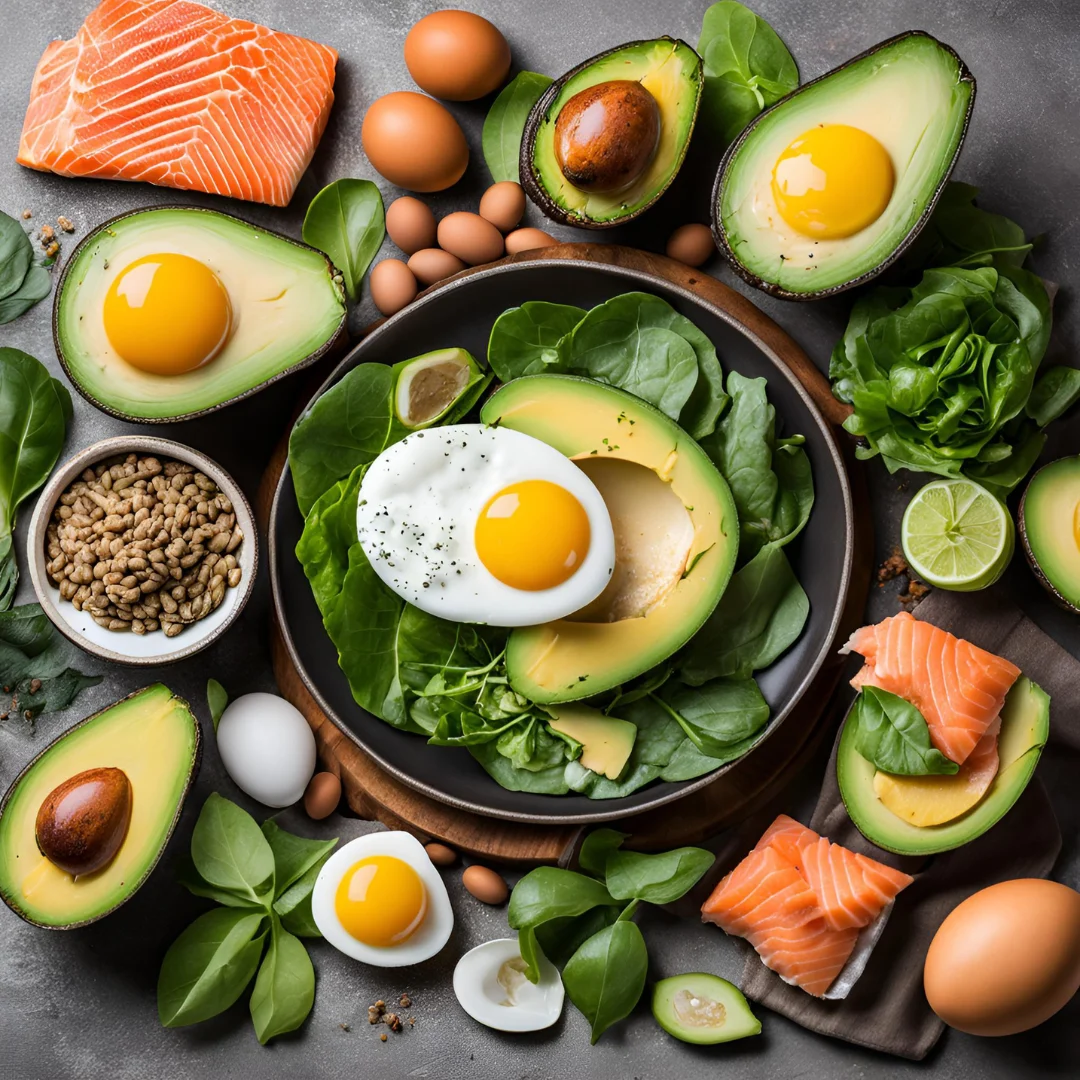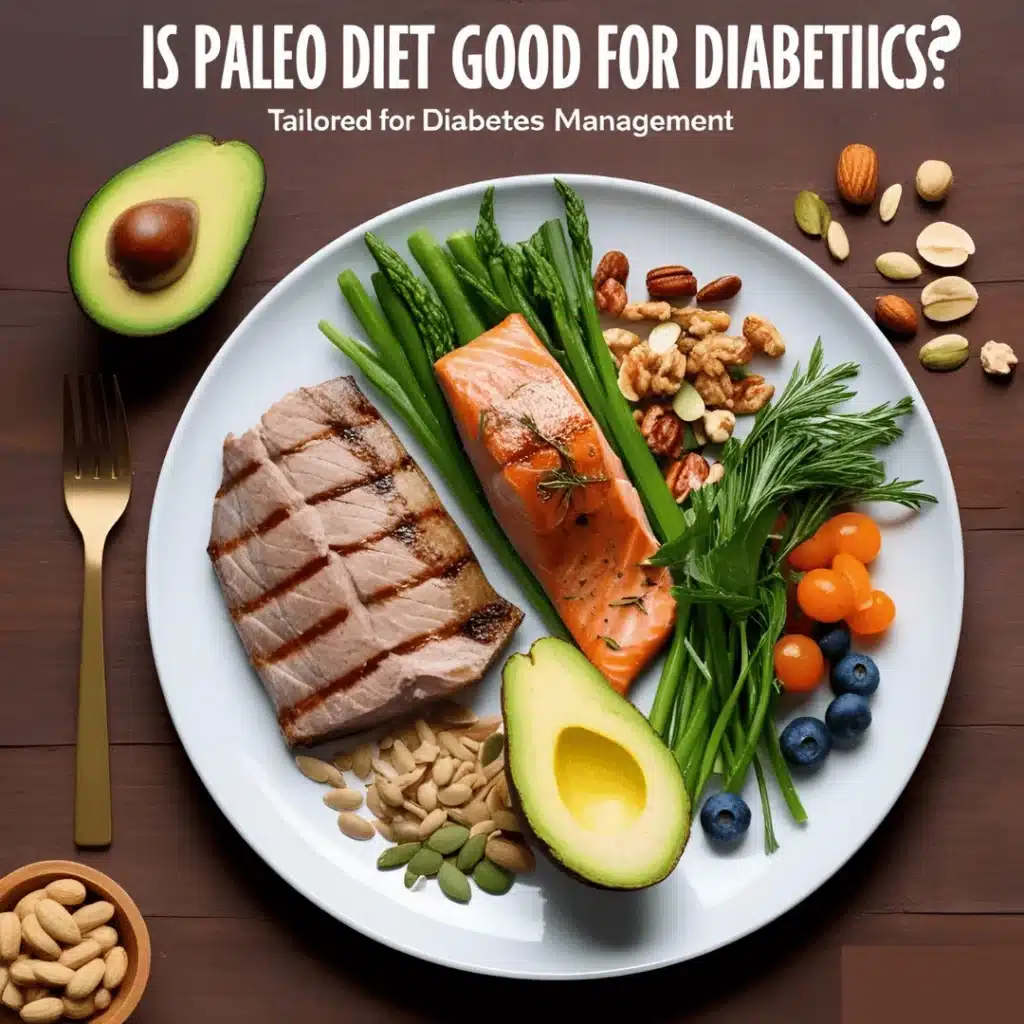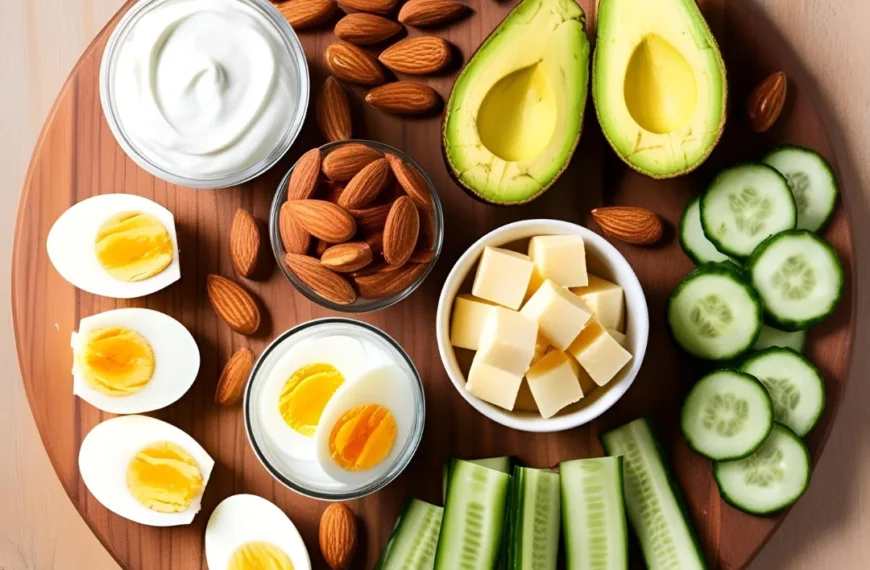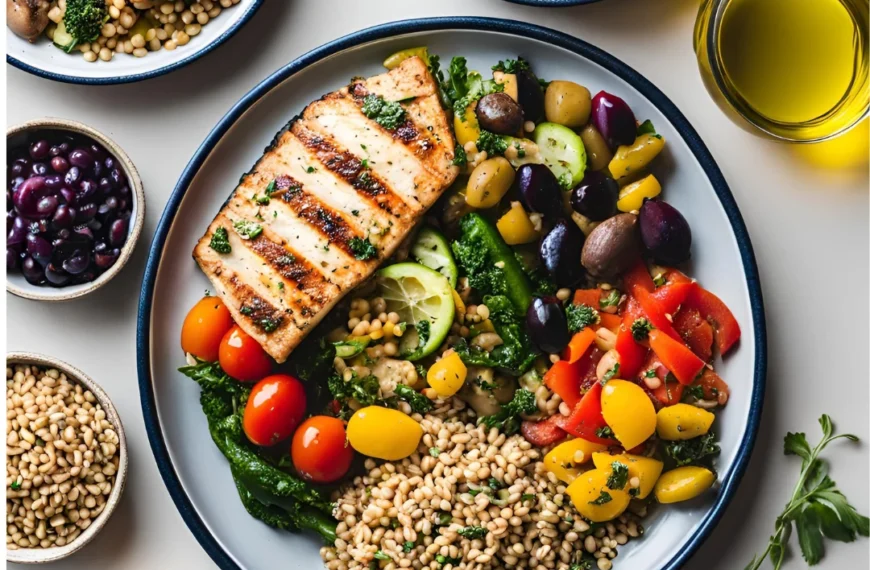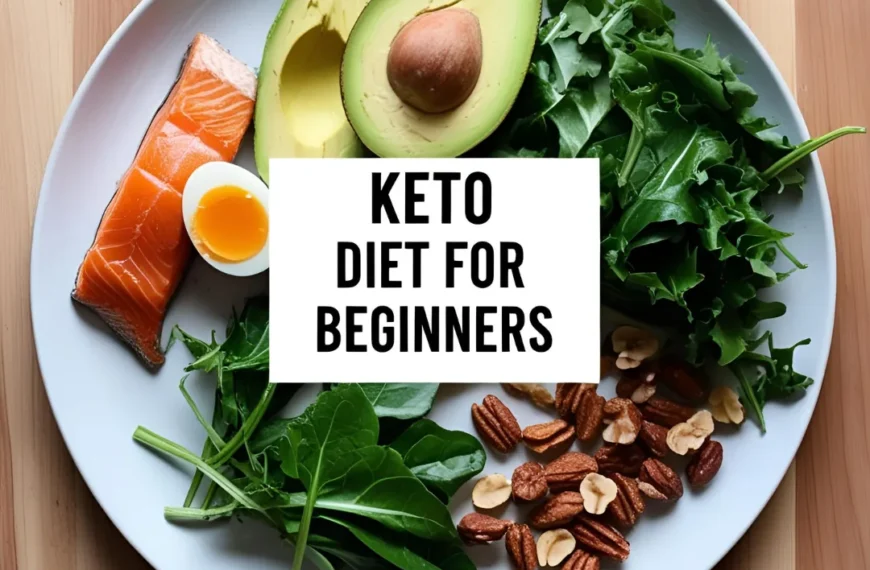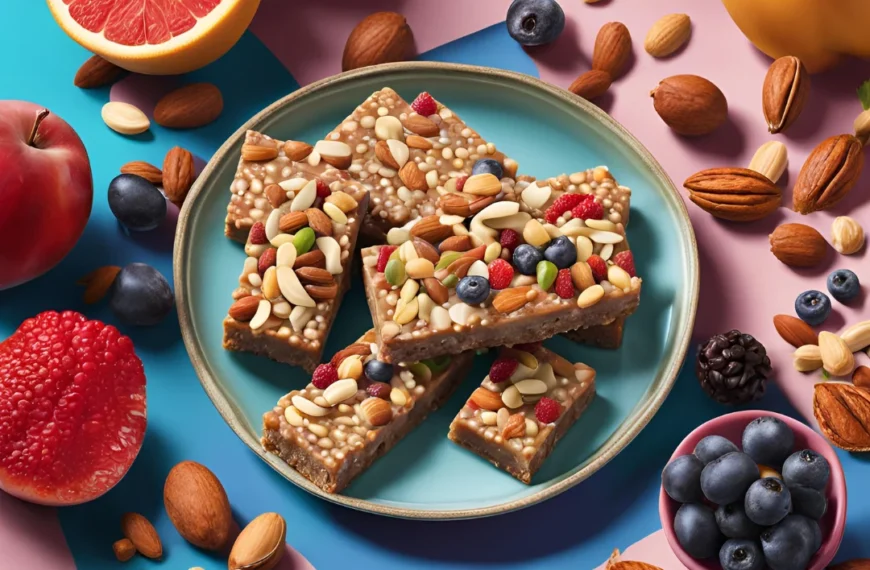Table of Contents
ToggleSummary
The Keto Diet for Weight Loss is a scientifically backed approach that shifts the body’s metabolism from burning carbs to utilizing fat for energy. This process, known as ketosis, helps reduce insulin levels, promote fat burning, and sustain energy levels throughout the day. By focusing on low-carb, high-fat foods, such as avocados, nuts, and olive oil, individuals can effectively manage their weight while maintaining satiety. Proper macro tracking, hydration, and avoiding common mistakes like hidden carbs or excessive protein intake are crucial for optimizing fat loss on keto. Additionally, combining the keto diet with exercise enhances metabolism, leading to faster and more sustainable weight loss results.
To achieve long-term success, it’s important to develop a keto-friendly meal plan, overcome potential weight loss plateaus, and stay consistent with the diet. Strategies like intermittent fasting, carb cycling, and maintaining proper electrolyte balance can help maximize fat loss and prevent stagnation. Moreover, adapting keto to fit your lifestyle ensures sustainability, making it easier to maintain results. Whether you’re just starting or looking to refine your approach, embracing the keto lifestyle can be a game-changer for effective and lasting weight management.
Introduction
The Keto Diet for Weight Loss has gained immense popularity as an effective strategy to shed fat. Unlike traditional calorie-restricted diets, keto focuses on reducing carbohydrate intake and increasing healthy fat consumption to induce ketosis. A metabolic state where the body burns fat for energy instead of glucose. This science-backed approach helps in sustainable fat loss, enhanced energy levels, and improved metabolic health.
Understanding the Keto Diet for Weight Loss
How Keto Burns Fat for Energy
The Keto Diet for Weight Loss works by drastically reducing carbohydrate intake, shifting the body’s metabolism to burn fat instead of glucose. With fewer carbs available, glycogen stores deplete, forcing the liver to convert stored fat into ketones for energy. This metabolic switch helps accelerate fat loss while maintaining steady energy levels.
Ketones: The Key to Energy and Fat Loss
In ketosis, the liver breaks down fatty acids into ketones, which act as an efficient fuel source for the brain and muscles. Unlike glucose, ketones provide sustained energy, prevent blood sugar spikes, and reduce cravings. This helps individuals feel fuller for longer, leading to effortless calorie reduction and improved weight management.
Debunking Keto Myths
Many misconceptions surround the Keto Diet for Weight Loss. Some believe it’s just another fad, but scientific research proves its effectiveness in fat reduction and metabolic health. Keto is not about excessive protein consumption, nor does it lead to long-term health issues when done correctly. In fact, studies suggest that a well-balanced keto diet improves cholesterol, heart health, and insulin sensitivity.
How Keto Promotes Effective Fat Loss
Lower Insulin, Less Fat Storage
Reducing carbs on the Keto Diet for Weight Loss lowers insulin levels, preventing fat accumulation and encouraging stored fat to be used for energy. Lower insulin also minimizes hunger hormones, reducing appetite and cravings.
Healthy Fats Boost Energy & Satiety
Consuming high-quality fats like avocados, olive oil, and nuts helps sustain energy throughout the day while keeping hunger in check. Unlike quick-burning carbs, healthy fats promote satiety, preventing overeating and frequent snacking.
Ketosis Enhances Metabolism
Being in ketosis optimizes fat metabolism, improves insulin sensitivity, and accelerates calorie burning. This metabolic advantage makes weight loss more sustainable, helping individuals shed fat effectively without feeling deprived.
Keto-Friendly Foods for Fast Fat Loss
Best High-Fat, Low-Carb Foods
Choosing the right foods is essential for achieving weight loss on keto. The best high-fat, low-carb options include:
- Avocados: Packed with heart-healthy monounsaturated fats and fiber.
- Nuts and Seeds: Almonds, walnuts, chia, and flaxseeds provide healthy fats and protein.
- Olive Oil & Coconut Oil: Excellent sources of healthy fats for cooking and salads.
- Fatty Fish: Salmon, mackerel, and sardines provide omega-3s to boost metabolism.
- Eggs: A perfect protein-fat combination that supports ketosis.
Why Healthy Fats Matter
Unlike processed fats, whole-food sources of fat like avocados, nuts, and olive oil supply essential nutrients and support ketosis without causing inflammation. Healthy fats provide steady energy, reduce cravings, and enhance fat burning on a keto diet for weight loss.
Avoid Hidden Carbs and Processed Foods
Many packaged keto products contain hidden sugars, starches, and artificial additives that can slow weight loss. To stay in ketosis, focus on whole, unprocessed foods and check labels for added sugars or high-carb fillers.
Mastering Macros for Weight Loss
Optimizing Your Macronutrient Ratios
To maximize fat loss on keto, follow this macronutrient breakdown:
- 70-75% fats: Supports ketosis and sustained energy.
- 20-25% protein: Helps preserve muscle without spiking insulin.
- 5-10% carbs: Maintains ketosis and prevents sugar cravings.
Tracking Macros for Success
Using apps like MyFitnessPal or Carb Manager helps ensure you’re hitting the right macro targets. Tracking daily intake prevents accidental carb overconsumption, which can knock you out of ketosis.
Caloric Balance Matters
Even on a keto diet for weight loss, overeating healthy fats can stall progress. If you hit a plateau, assess your calorie intake and make adjustments to stay in a caloric deficit while maintaining ketosis.
Smart Keto Meal Planning for Fat Loss
Create a Sustainable Keto Meal Plan
A structured meal plan helps prevent cravings and keeps you on track. Focus on simple, nutrient-dense keto meals to maintain consistency.
Easy Keto Meal Ideas
- Breakfast: Scrambled eggs with avocado and olive oil.
- Lunch: Grilled salmon with spinach and feta cheese.
- Dinner: Zucchini noodles with pesto and grilled chicken.
- Snacks: Almonds, cheese, and olives.
Meal Prepping for Success
Prepping meals in advance saves time, reduces temptation, and ensures you stick to your macros. Batch-cooking keto-friendly meals makes it easier to stay consistent.
Exercise and Keto: The Ultimate Fat-Burning Duo
How Workouts Enhance Fat Loss on Keto
The keto diet increases fat oxidation, making exercise even more effective for burning stored fat. Combining strength training, HIIT, and cardio accelerates results.
Best Workouts on Keto
- Strength Training: Boosts metabolism and preserves muscle mass.
- HIIT (High-Intensity Interval Training): Maximizes fat burn in short sessions.
- LISS (Low-Intensity Steady-State Cardio): Supports fat-burning without exhausting glycogen stores.
Adapting to Keto Workouts
It takes 2-4 weeks to fully adapt to exercising on keto. Stay hydrated, replenish electrolytes, and increase healthy fat intake to maintain performance.
Sustaining Weight Loss Long-Term
Prevent Regain After Weight Loss
After reaching your goal, gradually reintroduce healthy carbs while monitoring changes. Transitioning to a more balanced approach prevents weight regain.
Adapting Keto for Your Lifestyle
Sticking to a keto-friendly diet in social settings can be easy with proper planning. Choose low-carb options, practice portion control, and enjoy occasional treats mindfully.
Making Keto a Lifelong Choice
For long-term health, some people transition to a low-carb lifestyle while keeping the principles of keto intact. Whether strict or modified, keto remains an effective way to maintain weight loss.
FAQs
1. How Long Does It Take to See Weight Loss Results on Keto?
Most people notice changes within the first 1-2 weeks.
2. Can I Eat Fruit on a Keto Diet and Still Lose Weight?
Stick to low-carb fruits like berries in moderation.
3. What Should I Do If I Stop Losing Weight on Keto?
Reassess macros, consider intermittent fasting, and increase physical activity.
4. Is the Keto Diet Safe for Long-Term Weight Loss?
Yes, when done correctly with a focus on whole foods and balanced nutrition.
5. Can Keto Help with Stubborn Belly Fat?
Yes, keto has been shown to reduce visceral fat, which is linked to belly fat.
Conclusion
The Keto Diet for Weight Loss is a powerful and effective method for shedding excess fat while maintaining energy and overall well-being. By following a low-carb, high-fat diet, tracking macros, and making mindful food choices, individuals can achieve sustainable weight loss without feeling deprived. Avoiding common pitfalls like hidden carbs, dehydration, and overeating fats or proteins ensures better results. Additionally, pairing the keto diet with exercise enhances fat-burning potential, making it a holistic approach to weight management.
For long-term success, it’s essential to stay consistent, adapt the diet to fit your lifestyle, and implement strategies like intermittent fasting and carb cycling when needed. With patience and commitment, the keto diet can transform not only your body but also your overall health. By making smart choices and staying informed, you can turn ketosis into a sustainable lifestyle and achieve your weight loss goals with ease.

